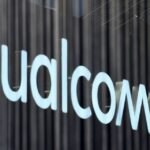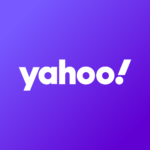The cloud is a remote environment where computing power and data storage are hosted and software applications are served remotely via the internet. And while some investors might consider investing in cloud stocks risky because the technology is relatively new, there are three relatively stable cloud computing stocks worth a closer look.
<h2 class="canvas-atom canvas-text Mb(1.0em) Mb(0)–sm Mt(0.8em)–sm" type="text" content="Microsoft is transitioning its business from PCs to the cloud” data-reactid=”12″>Microsoft is transitioning its business from PCs to the cloud
<p class="canvas-atom canvas-text Mb(1.0em) Mb(0)–sm Mt(0.8em)–sm" type="text" content="Microsoft (NASDAQ: MSFT) is one of the most valuable companies in the world, with a market cap of over $1 trillion (yes, with a "t"). The company, once best known for the operating system installed on personal computers, began transitioning to the cloud as PC sales slowed with the proliferation of mobile devices.” data-reactid=”13″>Microsoft (NASDAQ: MSFT) is one of the most valuable companies in the world, with a market cap of over $1 trillion (yes, with a “t”). The company, once best known for the operating system installed on personal computers, began transitioning to the cloud as PC sales slowed with the proliferation of mobile devices.

Image Source: Getty Images
<p class="canvas-atom canvas-text Mb(1.0em) Mb(0)–sm Mt(0.8em)–sm" type="text" content="Today, Microsoft's Azure unit is one of cloud computing's largest Infrastructure as a Service (IaaS) offerings. For the year ended June 30, 2019, Azure's revenue grew 64%. According to Microsoft, Azure has an "unlimited [Total Addressable Market]." It represents about a third of Microsoft’s revenue and contributes largely to the company’s 69% gross margin.” data-reactid=”26″>Today, Microsoft’s Azure unit is one of cloud computing’s largest Infrastructure as a Service (IaaS) offerings. For the year ended June 30, 2019, Azure’s revenue grew 64%. According to Microsoft, Azure has an “unlimited [Total Addressable Market].” It represents about a third of Microsoft’s revenue and contributes largely to the company’s 69% gross margin.
<p class="canvas-atom canvas-text Mb(1.0em) Mb(0)–sm Mt(0.8em)–sm" type="text" content="Microsoft boasts a low debt-equity ratio of 0.71 and has more than $11 billion in cash. Its balance sheet is rock solid. It generates more than $3.00 per share in free cash flow annually; more than 1.5 times its dividend payout. Microsoft has paid a quarterly dividend since 2003 and has grown it at a compound annual growth rate (CAGR) of 10.41%. The yield is approximately 1.3%.” data-reactid=”27″>Microsoft boasts a low debt-equity ratio of 0.71 and has more than $11 billion in cash. Its balance sheet is rock solid. It generates more than $3.00 per share in free cash flow annually; more than 1.5 times its dividend payout. Microsoft has paid a quarterly dividend since 2003 and has grown it at a compound annual growth rate (CAGR) of 10.41%. The yield is approximately 1.3%.
<h2 class="canvas-atom canvas-text Mb(1.0em) Mb(0)–sm Mt(0.8em)–sm" type="text" content="Oracle’s current customers are its primary growth opportunity” data-reactid=”28″>Oracle’s current customers are its primary growth opportunity
<p class="canvas-atom canvas-text Mb(1.0em) Mb(0)–sm Mt(0.8em)–sm" type="text" content="Oracle (NYSE: ORCL) is the leading database software company in the world with a market cap of more than $178 billion. Its more than 430,000 customers worldwide represent its biggest growth opportunity. Oracle is rapidly converting many of these "on-premise" (i.e., software is hosted locally, not delivered through the cloud) customers to a Software as a Service (SaaS) model, which translates into a three-fold revenue multiplier for Oracle.” data-reactid=”29″>Oracle (NYSE: ORCL) is the leading database software company in the world with a market cap of more than $178 billion. Its more than 430,000 customers worldwide represent its biggest growth opportunity. Oracle is rapidly converting many of these “on-premise” (i.e., software is hosted locally, not delivered through the cloud) customers to a Software as a Service (SaaS) model, which translates into a three-fold revenue multiplier for Oracle.
<p class="canvas-atom canvas-text Mb(1.0em) Mb(0)–sm Mt(0.8em)–sm" type="text" content="This customer conversion helped Oracle generate a nearly 80% gross margin in the year ended May 31, 2019 and gives it another great growth opportunity. Many of those customers run back-office business applications that are not Oracle products. As customers transition their Oracle applications to the cloud, Oracle also aids them in converting those other back-office applications, replacing them with Oracle products. If just a fraction of those customers switch to an Oracle product, Oracle stands to book an additional $21 billion in revenue.” data-reactid=”30″>This customer conversion helped Oracle generate a nearly 80% gross margin in the year ended May 31, 2019 and gives it another great growth opportunity. Many of those customers run back-office business applications that are not Oracle products. As customers transition their Oracle applications to the cloud, Oracle also aids them in converting those other back-office applications, replacing them with Oracle products. If just a fraction of those customers switch to an Oracle product, Oracle stands to book an additional $21 billion in revenue.
<p class="canvas-atom canvas-text Mb(1.0em) Mb(0)–sm Mt(0.8em)–sm" type="text" content="Oracle's debt-equity ratio is 2.31. Nevertheless, its debt is A1 rated by Moody’s and therefore investment grade (defined as Baa3 or better). Oracle had more than $20 billion in cash and equivalents at the end of its last fiscal year and generated more than $53 billion in free cash flow. Oracle has paid a dividend every quarter since 2009 and has grown it at a CAGR of nearly 17%. It yields approximately 1.7%.” data-reactid=”31″>Oracle’s debt-equity ratio is 2.31. Nevertheless, its debt is A1 rated by Moody’s and therefore investment grade (defined as Baa3 or better). Oracle had more than $20 billion in cash and equivalents at the end of its last fiscal year and generated more than $53 billion in free cash flow. Oracle has paid a dividend every quarter since 2009 and has grown it at a CAGR of nearly 17%. It yields approximately 1.7%.
<h2 class="canvas-atom canvas-text Mb(1.0em) Mb(0)–sm Mt(0.8em)–sm" type="text" content="Mixing on-premise computing with public and private cloud helps IBM deliver a hybrid solution” data-reactid=”32″>Mixing on-premise computing with public and private cloud helps IBM deliver a hybrid solution
<p class="canvas-atom canvas-text Mb(1.0em) Mb(0)–sm Mt(0.8em)–sm" type="text" content="IBM (NYSE: IBM) is arguably America’s first tech company. Founded in 1911, IBM has survived more than 100 years by evolving as times and technology have changed. Today it is the leading provider in a $1.2 trillion hybrid cloud opportunity.” data-reactid=”33″>IBM (NYSE: IBM) is arguably America’s first tech company. Founded in 1911, IBM has survived more than 100 years by evolving as times and technology have changed. Today it is the leading provider in a $1.2 trillion hybrid cloud opportunity.
<h2 class="canvas-atom canvas-text Mb(1.0em) Mb(0)–sm Mt(0.8em)–sm" type="text" content="Stocks any equity investor can own” data-reactid=”39″>Stocks any equity investor can own
All three of these companies are profitable and have healthy gross margins. Each has a strategy to grow revenue and free cash flow. They all have solid balance sheets and plenty of cash on hand. They each have a history of growing their dividends and the yield on each of them rivals what fixed income (bond) investors might expect to earn on a seven to 10-year investment grade note.
<p class="canvas-atom canvas-text Mb(1.0em) Mb(0)–sm Mt(0.8em)–sm" type="text" content="More From The Motley Fool” data-reactid=”41″>More From The Motley Fool
<p class="canvas-atom canvas-text Mb(1.0em) Mb(0)–sm Mt(0.8em)–sm" type="text" content="Teresa Kersten, an employee of LinkedIn, a Microsoft subsidiary, is a member of The Motley Fool’s board of directors. Anthony Termini owns shares of Microsoft. The Motley Fool owns shares of and recommends Microsoft. The Motley Fool is short shares of IBM and has the following options: short January 2020 $200 puts on IBM, short September 2019 $145 calls on IBM, long January 2020 $200 calls on IBM, and long January 2021 $85 calls on Microsoft. The Motley Fool has a disclosure policy.” data-reactid=”49″>Teresa Kersten, an employee of LinkedIn, a Microsoft subsidiary, is a member of The Motley Fool’s board of directors. Anthony Termini owns shares of Microsoft. The Motley Fool owns shares of and recommends Microsoft. The Motley Fool is short shares of IBM and has the following options: short January 2020 $200 puts on IBM, short September 2019 $145 calls on IBM, long January 2020 $200 calls on IBM, and long January 2021 $85 calls on Microsoft. The Motley Fool has a disclosure policy.
<p class="canvas-atom canvas-text Mb(1.0em) Mb(0)–sm Mt(0.8em)–sm" type="text" content="This article was originally published on Fool.com” data-reactid=”50″>This article was originally published on Fool.com











Add Comment